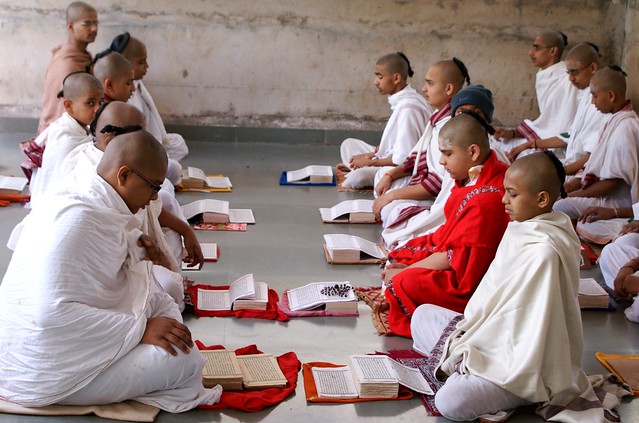 |
| Image Source: speakingtree.in |
The Vedas are a collection of sacred books containing the oldest scriptures of Hinduism and the oldest layer of Sanskrit literature in the form of poems and hymns. The books contain knowledge that encompasses all aspects of life. They are the basis of Sanatana Dharma, the universal religion or sacred order, and have influenced other religions such as Buddhism Sikhism, and Jainism, which is why they are often called the mother of all scriptures.
The Vedas are thought to have been composed during the first to second millennium BCE. Believers say that man did not write them, but taught by the gods to sages and seers and passed down through oral tradition.
The Vedas are divided into four: Rigveda, Yajurveda, Samaveda, and Atharvaveda. Rigveda is considered the main Veda and is the oldest among the four. It is a collection of hymns and songs, many of which are still recited as Hindu prayers today. The Yajurveda provides information for priests on how to perform rituals and sacrifices and includes mantras to be used during their execution of these rituals. The Samaveda is a collection of songs, hymns, melodies, and verses, drawn from the Rigveda. The Rigveda, Yajurveda, and Samaveda are collectively known as trayi-vidya, or “threefold knowledge.” The fourth Veda, Atharvaveda, contains numerous spells and charms, such as harmonious family relationships or finding a husband. It contains about 760 hymns, some of which were taken from the Rigveda. The Atharvaveda provides insights on numerous aspects of Vedic culture. However, some scholars do not consider the Atharvaveda as part of the Vedas at all.
| Image Source: pathofdharma.org |
The Vedas praised a full pantheon of gods, such as Indra, the leader of the gods and lord of heaven, Surya, a solar deity, and Soma, a lunar deity.
Scholars estimate that at about 900 BCE, the Brahmanas, a collection of texts that provided commentaries on the Vedas were composed. The Brahmanas provided more detail on rituals, explained symbols and contained many more myths. The Brahmanas were followed by the Aranyakas and the Upanishads. Together, the Samhitas or collection of hymns of the Vedas, the Brahmanas, the theologies of the Aranyakas, and the philosophies of the Upanishads create a body of ancient texts called Shruti, which comprise the tenets of Hinduism.
 |
| Image Source: flickr.com |
For more discussions on the history and importance of the Vedas, follow this Michael Mamas Twitter account.
~Excerpt from article, Veda, Right-handed Tantra, Left-handed Tantra: In the spiritual arena, it’s important to clearly distinguish between three terms: Veda, right-handed tantra, and left-handed tantra. Simply stated, Veda correlates to physics, right-handed tantra correlates to engineering, and left-handed tantra correlates to hot-wiring a car.~
No comments:
Post a Comment